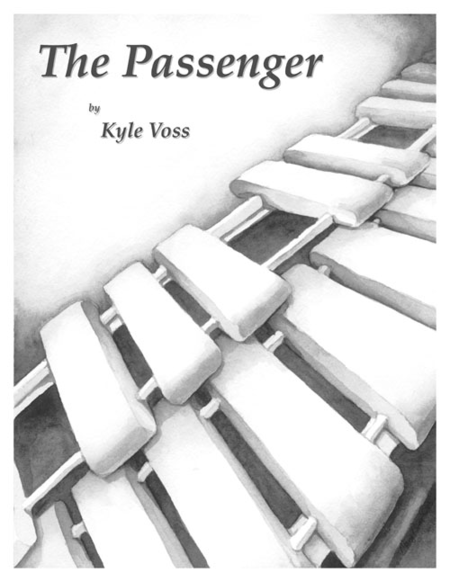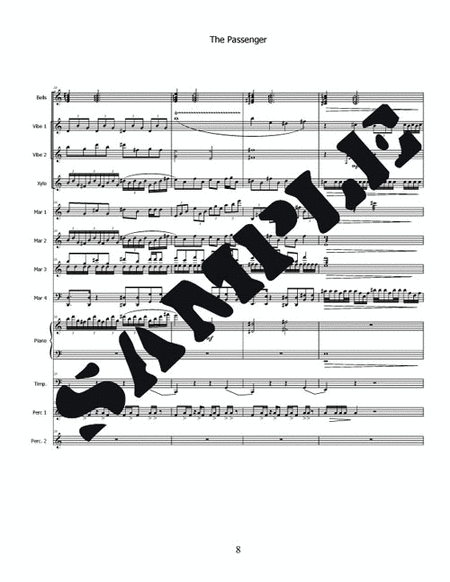Details
Description
SKU: IP.E-KV-PAS
Composed by Kyle Voss. Score and set of parts. Innovative Percussion #E-KV-PAS. Published by Innovative Percussion (IP.E-KV-PAS).8.5x11 inches.
Composer's notes: The Passenger tells the story of a man who leaves town for an experience away from the ordinary. The vessel of transportation is a train, indicated by the glissandi in the bells, tympani, and the melodic ostinato found in the marimbas. Follow the many motives as they move the piece forward through an adventure with the passenger. A few of the unique sounds in The Passenger include four-note glissandi in the bells interacting with glissandi on a single timpano. The percussion parts are all concert versions of instruments found in a standard drum set. The piano blends equally with the rest of the ensemble, sharing both melodic and accompaniment responsibilities.
"At about seven and a half minutes long, "The Passenger" is written for 11 percussionists and a pianist. The piece is scored for bells, two vibraphones, a xylophone, two 4.0-octave marimbas, a 4.5-octave marimba, a bass marimba or a 5.0-octave marimba, four timpani, two non-pitched percussion parts, and a piano. Bass drum, low tom, snare drum, crash cymbal, ride cymbal, China cymbal, splash cymbal, and suspended cymbals are also used in the non-pitched percussion parts. Four-mallet techniques are required for the bells, vibraphone 2, and marimba 1, 2, and 3 parts, and three mallets can be used for vibraphone 1 to execute the large interval leaps. However, players can switch between two and four mallets at their own discretions. Good reading skills and good chops are required to play the mallet parts, but the timpani and percussion parts are not as demanding. A low C (two octaves below middle C) is used repeatedly in the timpani part, which may be too low for some drums to project a quality tone. The piece moves in a steady tempo, quarter note = 80 in 4/4. There are three 2/8 measures used separately to change the mood of the piece. The piece is through composed; it runs from one idea to another. No matter how many times the idea changes, one can still find the theme melody, but it may be transposed in a different voicing. This pretty, tonal piece is a great tool for training a mixed-level college ensemble. If the parts are assigned well, everyone in the ensemble can enjoy playing the piece." - I-Jen Fang Percussive Notes May 2010.


 Share
Share